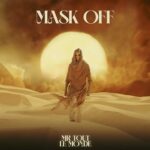When it was announced that Animal Crossing: New Horizons would be crossing over with Sanrio, people were excited. Sanrio and its roster of characters are instantly recognizable all over the world. The fact that the Amiibo cards needed to unlock the New Horizons content sold-out in minutes shows just how popular Hello Kitty and her friends are in America. But it wasn't always this way. In fact, the story of Sanrio is a fascinating one that shows how pop-culture has changed in both Japan and North America.
The story of Sanrio starts in 1960. One Shintaro Tsuji set up a company in Nihonbashi, the bustling business district in Tokyo. This company was called the Yamanashi Silk Center, and as the name suggests, it sold silks. In 1962, the company expanded and started to sell rubber sandals. In an effort to stand out, the company began to paint cute designs on their sandals, and they quickly saw sales increase, especially when they released their range of strawberry-themed patterns. Motivated by this success, the company hired cartoonists to create cute designs and patterns that they could put on their products.
As the company grew, plans were quickly made to expand and pivot the company once more. In 1969, Sanrio Greetings was formed. This company started to put the characters and designs onto affordable but cute gift products. Sanrio's original business model was very similar to the one Hallmark uses in the US. In 1973, Yamanashi Silk Center changed its name to Sanrio, moved its headquarters to Gotanda and opened its first restaurant. Sanrio Greetings was folded into this new company and the firm set up its film production arm.
The company offers two different explanations for the name Sanrio. In European marketing materials, Sanrio says the name is derived from the Spanish words "San" and "Rio." Meaning that Sanrio basically translates to "Saintly River." However, in some Japanese marketing materials, the company says that the name is based on an on'yomi reading of its original company name's kanji. This reading turns Yamanashi into "Sanri," and the company then added an O to the name because it reflects the sound a person makes when they're excited.
In 1975, Sanrio released a clear plastic coin purse. This coin purse featured a large-headed cat with the word "hello" written under it. This was the first appearance of Hello Kitty, a character who would soon become Sanrio's signature mascot. Designed by Yuko Shimizu in 1974, the character was named Kitty White. Due to the popularity of British imports and culture, Kitty White was said to be from London.
Late 1975 also saw Sanrio's first step into the film industry as it began production of the animated feature Little Jumbo, though the movie wouldn't be released until 1977. In 1976, Hello Kitty landed in America as Sanrio opened their first US store in the Eastridge Mall in San Jose, California. San Jose was also chosen as the headquarters of Sanrio Inc., the company's American division.
As all of this was happening, Sanrio continued to launch new characters, something they do to this day. By bringing characters in and out of prominence, they can keep their brand fresh and stop their mascots from becoming stale or overused. The characters represented on the Amiibo cards cover several of Sanrio's most popular characters from across their history, from 1975's Little Twin Stars and My Melody to 1996's Pompompurin. The most recent character represented is Cinnamoroll, who launched in 2001. But since 2001, there have been other characters released, including Aggretsuko and RiluRiluFairilu, who joined the roster in 2015.
The brand continued to be popular through the 1980s, with Hello Kitty starring in cartoons that were popular in both Japan and America. However, the 1990s saw Sanrio totally change the Hello Kitty brand. Originally Hello Kitty was aimed at children and teens. However, Sanrio decided to make retro products aimed at older audiences, both for those who had owned Hello Kitty products as children and for those who were unable to afford them when they were younger.
This led to the brand gaining massive popularity in both Japan and America. In America, stars like Mariah Carey, Paris Hilton and Britney Spears were seen wearing Hello Kitty merchandise. This, coupled with the "Cool Japan" phase of the late 1990s and early 2000s, meant that the brand quickly gained fans in America, appealing to both children and adults. By 2008 it was predicted that Hello Kitty products accounted for half of Sanrio's $1 billion income, and by 2014 there were said to be over 50,000 Hello Kitty product lines in production. This surge in popularity caused other Sanrio characters to enjoy similar boosts, making them even more recognizable globally.
In 2010 Dick Bruna, the creator of the Miffy comics, tried to sue Sanrio. Bruna said that Hello Kitty's rabbit friend Cathy infringed on the trademark for Miffy. Sanrio fought this, but a Dutch court agreed with Bruna and demanded Sanrio stop producing Cathy products in Belgium, Luxembourg and the Netherlands. After the 2011 Japanese Earthquakes, Sanrio reached a deal with Bruna where Sanrio would stop producing Cathy products globally. Both Bruna and Sanrio then made a joint donation to support people affected by the earthquake.
Sanrio is now officially a global brand, and it shows no signs of declining. The massive demand for the Amiibo cards shows just how popular the brand's characters are among so many people. Hello Kitty herself has come a long way from being a single cat on a coin purse. Now you can get her image on everything from cheap stationery to expensive jewelry. Along the way, the company has been involved in many mediums, from fashion to theme parks to music and videogames. And, as new mediums become popular, we will likely see Sanrio attempt to use them to their full advantage.
About The Author

